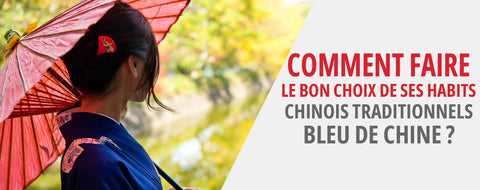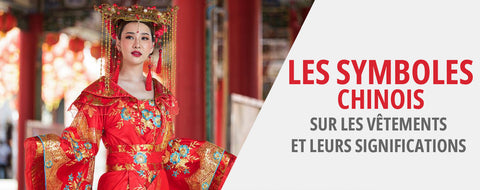
The 8 large Chinese kitchens
of reading - words
Always in a desire to make Chinese culture accessible and to make its riches shine, we continue our series on the Chinese cuisine By making you discover its regional differences! Indeed, Chinese cuisine is rich and varied, its style and its taste varying from one region to another. Its history dates back thousands of years and evolves according to changes in the environment and local preferences over time. Chinese cuisine also varies according to the social class and the ethnic origin of each community, and it is often influenced by the kitchens of others crops. All these factors contribute to an unparalleled range of cooking techniques, ingredients, dishes and food styles that constitute what is called "Chinese food" in the West.
There are a number of distinctive styles from different regions which together constitute the whole of Chinese cuisine, and among these, eight traditions culinary specific that is recognized throughout Chinese society and around the world. In this article you will therefore discover the 8 large Chinese kitchens that make the greatness of the Chinese gastronomy.
1) Sichuan cuisine

Originally from southwest China, Sichuan cuisine (川菜 in Chinese) is the most popular cuisine in China. Sichuan dishes are famous for their flavors spicy, acres, very high and their red color. Sichuan leaders use a lot of seasonings such as various peppers and peppers, garlic and bean grass, considered the soul of Sichuan dishes. The Chinese fondue is the most popular Sichuan dish in China and is the first choice when dining with friends.
Why do the inhabitants of Sichuan consume so much chili and strong pepper? The local climate is wet. Eat pepper Can help the blood of the body to circulate quickly in a short time, which allows to easily evacuate the humidity of the body. Sichuan residents also think that eating pepper gives them better skin.
But, the Sichuan cuisine is not only a spicy and seasoned kitchen. In all, the Sichuan cuisine has 24 flavors which can be divided into three main categories. The first and most popular is the noted kitchen mentioned above, with representative dishes such as the Chinese fondue or the tofu ma po. The second is spicy and aromatic, with dishes always accompanied by a touch of garlic and ginger. The third is sour.
Typical Sichuan dishes:
- Kung Pao chicken
- The Chinese Fondue
- Mapo Tofu
- The grated pork yuxiang
2) Cantonaise cuisine

The Cantonese cuisine (粤菜), also called the kitchen yue or kitchen guangdong, is characterized by a taste costs, natural and the use of various cooking methods. Cantonese chefs are attentive to the quality and natural taste of food raw materials they use. Most Cantonnais foods have a fresh taste, natural and sweet. In order to keep the original flavor and the raw taste of the main ingredient, the Cantonese chiefs are very light when it comes to seasoning. The seasonings must thus bring out or enhance the original taste of the ingredient, and not create a whole new taste. This regional cuisine adapts to seasonal changes: so dishes in summer and fall are light, while in winter and spring, they are a little more robustive. Indeed the Cantonnais prefer seasonal foods. For example, they eat poles in the middle of winter and shrimp in April, when they are larger and tastiest.
This kitchen is also characterized by rich methods of cooking. Cantonese chefs use cooking techniques such as jumping, bouating water, steam cooking, baked cooking, sealing, sautéed, fried and roasting. Most of them can preserve the flavor natural and original food. Cantonese chefs are particularly good at controlling the fire temperature and decorating and drawing up the dishes. The dishes they cook are not only tasty but also attractive, both by their appearance and by their smell. Accompany these sumptuous dishes of Cantonese cuisine with tea poured into typical Chinese teapots And you will immediately be transported in the Middle Empire.
Most Chinese restaurants abroad are Cantonese restaurants, which makes Cantonese cooking the most popular Chinese cuisine in the world and the most representative of Chinese kitchens in the world. It consists of three branches: Guangzhou dishes, Chaozhou dishes and Dongjiang dishes, and everyone has its own characteristics.
Typical Cantonese dishes:
- Char Siu (Chinese barbecue pork)
- Pork Sudre-douce sauce
- Cantonaise roasted goose
- Pumpkin soup
3) Hunan cuisine

Originally from the Eastern Dynasty of Zhou (770 - 256 BC), Hunan cuisine, also called Xiang cuisine, is another popular cuisine throughout China, with spicy taste. Hunan dishes are even more raised than those of Sichuan, because they contain even more chili. The inhabitants of Hunan also invented the use of taste sweet, and they really like marinated and preserved vegetables and meats. They are also fond of dried or fresh chilli. The chefs of the Hunan cuisine use several cooking methods such as sautéed dishes, steam or smoked, but the most remarkable cooking and for which they are most famous is the ragout.
Typical Hunan dishes:
- Mao Red braised pork
- Pork fried with chili
- Orange bark beef
4) Shandong cuisine

The Shandong cuisine (鲁菜), from Zibo, at Shandong also called the Lu cuisine is over 2,500 years old, and is therefore considered the first of the 8 large kitchens in China. Shandong dishes pay great attention to quality and natural taste Foods. Sea fruits play a crucial role in Shandong's cuisine, which is known to use broth as an assistance! Most Shandong dishes are flavor umami, the fifth flavor with acid, bitter, sweet and salty, which constitutes dishes that are both salty, sweet and bitter.
Shandong chefs are attentive to the original taste of raw materials. Many dishes, such as steam tofu, are slightly seasoned, mainly with salt and soup, which gives dishes a umami and fresh taste with a tasty taste based on fresh products. Slower sour is also a representative flavor of Shandong dishes, such as the famous sources of a little bitter and sour pork.
There soup is the secret seasoning of Lu's cuisine. Two types of soup, clear soup and white milk soup, are always used in the kitchen. The clear broth is generally composed of chicken and duck. The white to milk broth is made of fatty meat like pork grove and pork bones. These broths are not consumed directly, but are used as a seasoning during cooking. It is this broth that is the secret of the Shandong chiefs to make dishes umami.
Shandong cuisine has the most abundant cooking techniques and cooking and cut The most difficult. There is the incredible technique for cooking the flipper, called "Bao"In Chinese. The technique of frying Lightning includes oil frying, frying sauce, green onion frying and broth frying. The heat is accurately controlled during the flash frying. This cooking method makes it possible to best keep the original taste of products.
Another special cooking technique is the embers, called "Pa"In Chinese. After preliminary cooking, for example frying, and rapid boiling, food is placed in a large round, then cooked again. The best known dish made by this technique is the braised chicken Dezhou.
THE "Your"is the unique cooking technique of the kitchen read. The ingredient is marinated and coated with an starch or flour paste, fried until it becomes golden, then slowly simmered with the seasonings and the broth Prepared.
The crisp frying to syrup is a specificity of the kitchen read for the preparation of sweet dishes who inspired other kitchens. The sugar is melted into the oil, before adding an ingredient to caramelize, such as the sweet potato. The diced sweet potato is coated with crisp and golden syrup and you can see the candied thread when you take one of the dice.
Shandong's typical dishes:
- Bouillon ravioli
- Dried scallops "auspicious"
- Corn with dried shrimp
5) Jiangsu cuisine

The kitchen of the jiangsu (苏菜), also called the kitchen, representing food from the South Chinais one of the eight Chinese kitchens with more than 2,000 years of history. It is famous for its delicate appearance and its slightly sweet, Umami, natural and sweet taste. Jiangsu dishes keep a lot from the original flavor of food. The main products are the Freshwater fish And seafood. The vegetables used are mostly lotus root, Chinese chestnut, cane shoots, winter bamboo shoots and water chestnut.
The chiefs are particularly good at making simmer And braise Food. They focus on control of heat heat and cutting art. The sculptures and the cutouts are extremely fine and precise. Jiangsu chiefs can even cut tofu 2 cm wide in 30 slices!
There are 4 big styles of Jiangsu cooking: Nanjing, Huaiyang, Suxi, Xuhai.
Typical Jiangsu dishes:
- Soup crab ravioli
- Cabbage and fish in pot-au-feu
- Hundred and pork egg porridge
6) The zhejiang cuisine

The Zhejiang kitchen (浙菜) is often slightly seasoned and attractive. Zhejiang cuisine chefs prefer fresh food Like seafood, freshwater fish and seasonal vegetables and are extremely strict in food selection. In general, the ingredients of Zhejiang cuisine are fresh and seasonal, and are rigorously selected. First of all, the ingredients used come from local specialties seasonal and ingredients must be fresh; Sea fruits and fish are generally killed just before cooking, in order to preserve the freshness and purity of taste. Finally, the ingredients must be tender, especially the meat.
To improve the taste of dishes, some seasonings are used in Zhejiang cuisine recipes, such as shallots, ginger, garlic, vinegar and Shaoxing yellow wine, which may have the effect of reducing unwanted odors and exacerbate the flavors. In particular, Shaoxing yellow wine, the specialty of shaoxing, is a unique condiment of Zhejiang cuisine, which gives it its own style. The famous pork Dongpo du Zhejiang is cooked with yellow shaoxing wine instead of water.
The Zhejiang cuisine is renowned for its varied cooking methods and the frying is most frequently used to prepare the dishes of the zhejiang kitchen, the ingredients are generally cut with a certain skill of slicing incomparable to have an attractive appearance.
The process is fast and the cooked foods come out tender and tasty. Foods cooked over high heat is often shaped in rollers, which are crisp on the outside and tender inside.
Typical zhejiang dishes:
- Pork Dongpo
- Sleamed of sautéed freshwater eel
- Rice pudding with eight treasures
7) Fujian cuisine

Originally from Fuzhou in Fujian, Fujian cuisine, or Min, is also popular, in Taiwan and in certain countries in Southeast Asia. Fujian cuisine (闽菜) are light, fresh, soft And very little fat. The foods used are quite rich, containing both earth and sea products. Current seasoning is the red vinasse (residue of liqueur), sugar and vinegar. Like Jiangsu's cuisine, Fujian's cuisine attaches great importance to Cutting techniques.
The province of Fujian is located by the sea, but is also bordered by plains. Consequently, many delights from earth and sea become ingredients from Fujian cuisine, such as mushrooms, bamboo shoots, rice, cane sugar, vegetables, fruits, freshwater turtles, fish, shrimp, clams. .
Regarding condiments, the Red Vinasse, sugar and vinegar are the most used condiments in Fujian cuisine recipes. The Red Vinasse is a residue of rice wine or fermented yellow wine with red yeast, which is very nutritious. The use of the Red Vinasse is a unique feature of Fujian cuisine, which gives the dishes a vine aroma and a beautiful red color. Sugar is used to eliminate unwanted bad odors; Vinegar is used to give a refreshing taste to food. Thus, Fujian's food has the reputation of being sweet without being disgusting, and light but not tasteless. Other unique seasonings, such as shrimp sauce, chili sauce and Worcestershire sauce are also used.
The most used cooking techniques are steaming, in the pan, frying, fast frying, stew, and simmering. In addition, the marinade At the Red Vinasse is the characteristic cooking technique of Fujian's kitchen, such as steam fish in the red vinasse for which the fish is marinated with red vinasse then steamed.
Typical Fujian dishes:
- Buddha saved over the wall
- Popiah
- Drunk crab
8) Anhi cuisine

The Anhui cuisine (徽菜), or simply the Kitchen Hui, was born over 1000 years ago in Huizhou, the current county of Shexian at the foot of the yellow mountain in the province of Anhui. The ingredients are mostlynatural origin And the flavor is light. Anhui cuisine attaches importance to dietetic revitalization with natural ingredients.
Most of the Anhui cuisine dishes are cooked with more oil than the dishes from other kitchens and keeps an attractive color. The oil used is generally rapeseed oil Made from local rapeseed, which can change and adjust the taste of the ingredients. Holder is extremely popular in Anhui. The use of hams As a condiment is typical of Anhui cuisine. In addition, Anhui cooking dishes have the effect of nourishing our body, because multiple ingredients with various nutritional qualities are balanced.
The pleasant climate, the many lakes and rivers and the lush hills of the old Huizhou region allow you to prepare Anhui cooking recipes from a wide variety ofwilderness, such as partridges, fish, turtles, masked civettes, poultry, fresh mushrooms, bamboo shoots, mushrooms, chestnuts, etc. Even Chinese medicinal herbs are used by Anhui cooking chefs for cooking. These materials all come from nature, which is essential to guarantee the flavor of the dishes of Anhui cuisine.
THE techniques The most frequently used cooking in the Kitchen Hui are the braised, steaming and steam cooking. The frying and the flash frying are however less used.
Typical Anhui dishes:
- Fatty oily-to-milk
- Nest of shrimp love
- Ham with bamboo shoots
You now know all the secrets of Chinese gastronomy and its 8 large kitchens. We hope that this article also made you want to test each kitchen and make some of the typical recipes Of these delicious kitchens.
To taste these succulent dishes according to the Chinese art of living, use traditional Chinese baguettes carefully selected by us on our online store.






